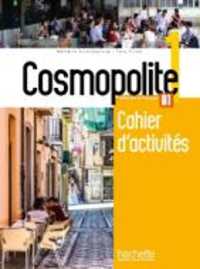Full Description
This book sets out to search for the Second World — the (post)socialist context — in dance studies and examines the way it appears and reappears in today's globalized world.
It traces hidden and invisibilized legacies over the span of one century, probing questions that can make viewers, artists, and scholars uncomfortable regarding dance histories, memories, circulations and production modes in and around the (post)socialist world. The contributions delve into a variety of dance practices (folk, traditional, ballet, modern, contemporary), modes of dance production (institutionalization processes, festival-making and market logics), and dance circulations (between centres and peripheries, between different genres and styles). The main focus is Eastern Europe (including Russia) but the book also addresses Cuba and China. The book's historical examples make the reader aware, too, of the (post)socialist bodies' influence in today's dance, including in contemporary dance scenes.
The (post)socialist context promises to be a prosperous laboratory to explore uncomfortable questions of legitimacy. Whose choreographic work is staged as a 'quality' dance production? Which dance practices are worthy of scholarly study? What are the limits of dance studies' understanding of what dance is or should be? In view of reclaiming the Second World through dance, this book thus probes questions that should be asked today but are not easy to answer; questions that dance practitioners, facilitators, critics, and researchers, including ourselves, are often not at ease with either. In doing so, the cracks of dance history begin to be sealed, and neglected dance practices are written back into history, provided with the academic recognition that they deserve.
Contents
List of Illustrations
List of Contributors
Preface
Acknowledgements
INTRODUCTORY ESSAYS
(Post)Socialism? Postsocialist Studies and the Three-Worlds Theory
Dunja Njaradi, Igor Koruga
Dance? Dance Studies and (Post)Socialist Dance
Annelies Van Assche, Milica Ivic
PART 1 - DANCE HISTORY AND MEMORY
ONE, TWO, THREE...COMRADE, COME, DANCE WITH ME
Igor Koruga
Choreography, Revolution, War: Kozaracko kolo between Anthropology and Dance Studies
Dunja Njaradi
The Complex Reputation of a Yugoslav Folklore Ballet: A Consideration of The Legend of Ohrid's National Character
Stefanie Van de Vyvere
The World of Art in the Russian World: Post-Soviet Rewritings of the Russian Ballet
Hanna Järvinen
Dancing in Life: Inner Mongolia's Ulan Muchir Grassland Art Troupes as Socialist Performance Practice
Emily Wilcox
PART 2 - DANCE PRODUCTION AND CIRCULATION
Conversations with Kinga: A Tribute to the Body and Craftsmanship
Annelies Van Assche
From Revolutionary to Reactionary: Contemporary Dance in Serbia Between Institutionalization and Anti-Institutionalization.
Milica Ivic
Dancing in Ruins: Lorna and Gabriela Burdsall in Cuba and the Diaspora
Elizabeth B Schwall
Festival-making and choreography: tales of affordance and crises in the work of Dušan Muric
Alexandra Baybutt
Index








